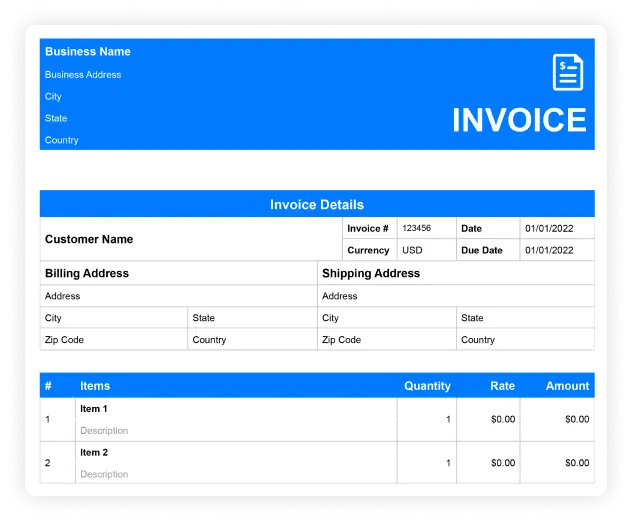Bill-to-Ship Invoice Format
A bill-to-ship to invoice format is used for billing one party while shipping goods to another, ensuring clear communication between all parties involved.
- Separates billing and shipping addresses.
- Tracks delivery status and payment terms.
- Ensures accurate billing for third-party shipments.

Download Customizable Bill-to-Ship Invoice Format
Create Your First Customize Bill-to-Ship Invoice Template With CaptainBiz
What Should Be Included in Bill-to-Ship to Invoice Format
Billing and Shipping Information:
Include the billing party’s details and the shipping address for the recipient to ensure that the goods reach the correct location while the invoice goes to the appropriate payer.
Description of Goods Shipped:
Provide a clear description of the goods being shipped, including quantities, weights, or sizes, to ensure transparency in the billing and shipping process.
Shipping Costs and Handling Fees:
Itemize the shipping costs and any additional handling fees to ensure the client understands the full scope of charges.
Invoice Number and Date:
Assign a unique invoice number and date to track the transaction and ensure accurate communication between the billing and shipping parties.
Total Amount and Payment Terms:
Clearly state the total amount due, along with the payment terms, to ensure prompt payment for the goods shipped.
Additional Notes (if applicable):
Include any relevant notes, such as delivery instructions or tracking numbers, to facilitate smooth logistics.
So what are you waiting for?
Frequently Asked Questions (FAQs)
A bill-to-ship invoice template is used for situations where the billing party and the recipient of the goods are different, ensuring proper communication and tracking.
It should include billing and shipping details, a description of the goods, shipping costs, and payment terms to ensure accurate billing.
Yes, bill-to-ship to invoices should include all shipping fees and handling charges to provide a complete breakdown of costs for the client.
Separating billing and shipping details ensures that the goods are delivered to the correct recipient, while the invoice is directed to the party responsible for payment.
It ensures clear communication, accurate billing, and efficient shipment tracking, improving customer satisfaction and financial management.



